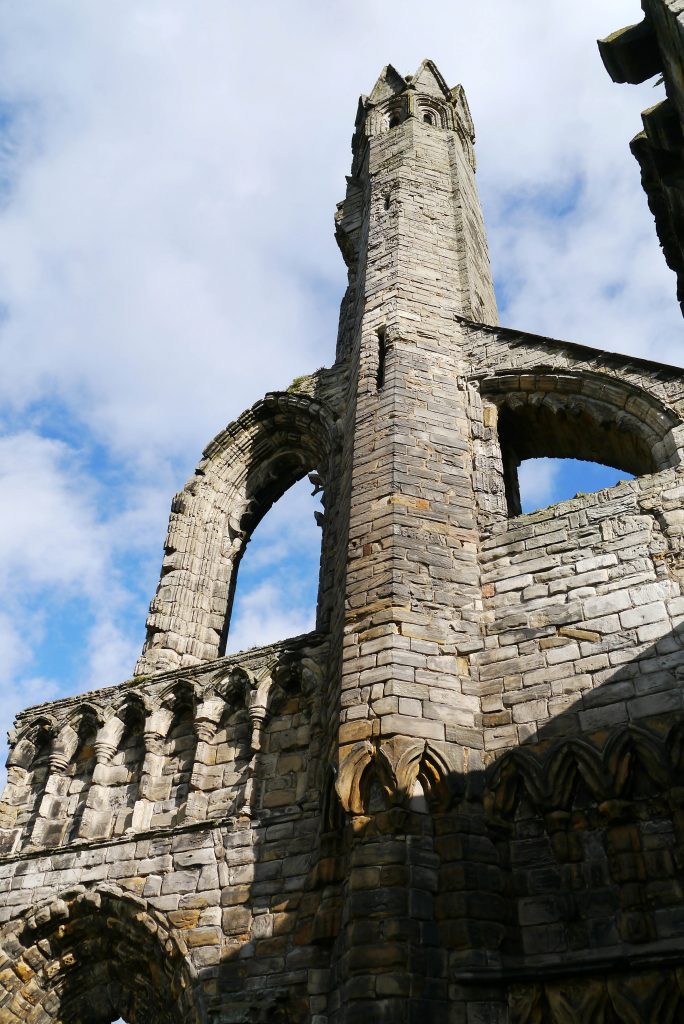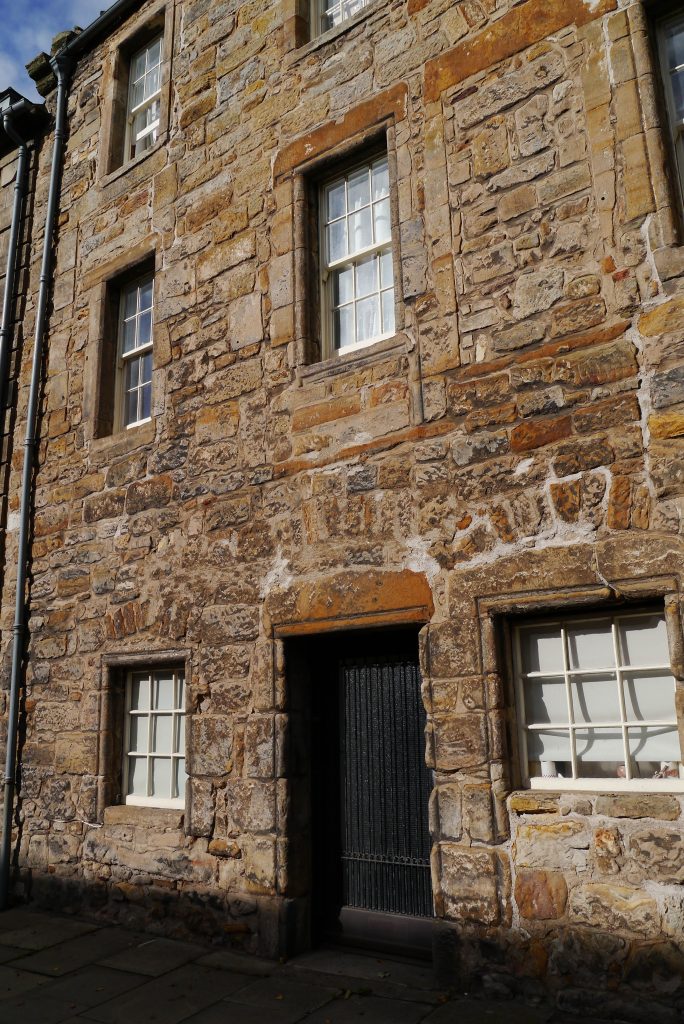
St Andrews Castle was badly damaged by the end of the siege, and then rebuilt by Archbishop Hamilton, who moved the main entrance to where it is now. After the reformation Scotland embraced Presbyterianism, and eventually got rid of bishops. The castle had primarily been a Bishop’s Palace and fell into disuse, the great hall collapsing into the sea. Its stone was used for repairing the harbour, and both it and the cathedral, which was attacked and damaged during the Reformation, were ‘quarried’ by the townsfolk for many, many years.
The University of St Andrews has a research group, Open Virtual Worlds, which has developed amazing 3D reconstructions of St Andrews which gives an excellent sense of both architecture and setting in the period.
Richard Lee was knighted by Henry VIII for his role in the English raid on Edinburgh in 1544. Whether he was ever in St Andrews Castle, and averted the attempt to take the castle through the mine, is not certain. He is an interesting man who came from obscure beginnings – so I chose to place him in the castle when the siege tunnel was being dug. England did send Italian siege engineers to support the Castilians, who will have been involved in the countermining.
Leon Strozzi, the famous Italian siege engineer was, indeed, sent by King Henri of France to aid Arran – and was instrumental in finally forcing the Castilians to surrender. He commented that, if the Castilians had destroyed St Salvators, and other towers, which were used as gun emplacements to bombard the castle, his task would’ve been much more difficult. Thankfully they did not destroy the towers, otherwise the skyline of St Andrews would be quite diminished. Instead the Castilians focused on attacking religious orders, damaging both the Dominican Friary in South Street and the Franciscan Friary at Greyfriars.

Apart from the two friaries there’s not much information about the destruction in the town. Certainly around the Seagate (I have used the name it was subsequently known by, ‘Swallowgait’, in the book. Today it’s called The Scores) and the castle environs generally, the damage was likely considerable.
There’s no doubt the townsfolk suffered during the siege, mostly from the Castilians running amok, but also from having such an influx of soldiers crowding into the town, making life even more difficult, dangerous and unsanitary. The French troops sacked the castle, helped themselves liberally to treasures from St Salavators, the cathedral and anywhere else they were able to, before departing – which, despite their role in the ending the siege, will have scarcely made them more popular with local folk than the Castilians were.

The importance of family was a theme of the book, and, an overall sense I tried to convey was that our family has our back (or should have!). The Seton family most likely would have had their property confiscated if Will’s involvement became widely known – certainly other real key players, such as the Leslies, did. But perhaps the fictional Gilbert Logie used his influence to protect them.
If the Duke of Somerset, Regent to Edward VI, had realised that the French fleet was on its way to break the siege, he may well have expedited his orders to the English ships to relieve the garrison and take the castle. St Andrews would then have been overrun by English troops and Will, and his family, might have decided it was wise to swear allegiance to King Edward, accept whatever pension was offered and become ‘assured Scots’ – at least until the town was re-taken.
